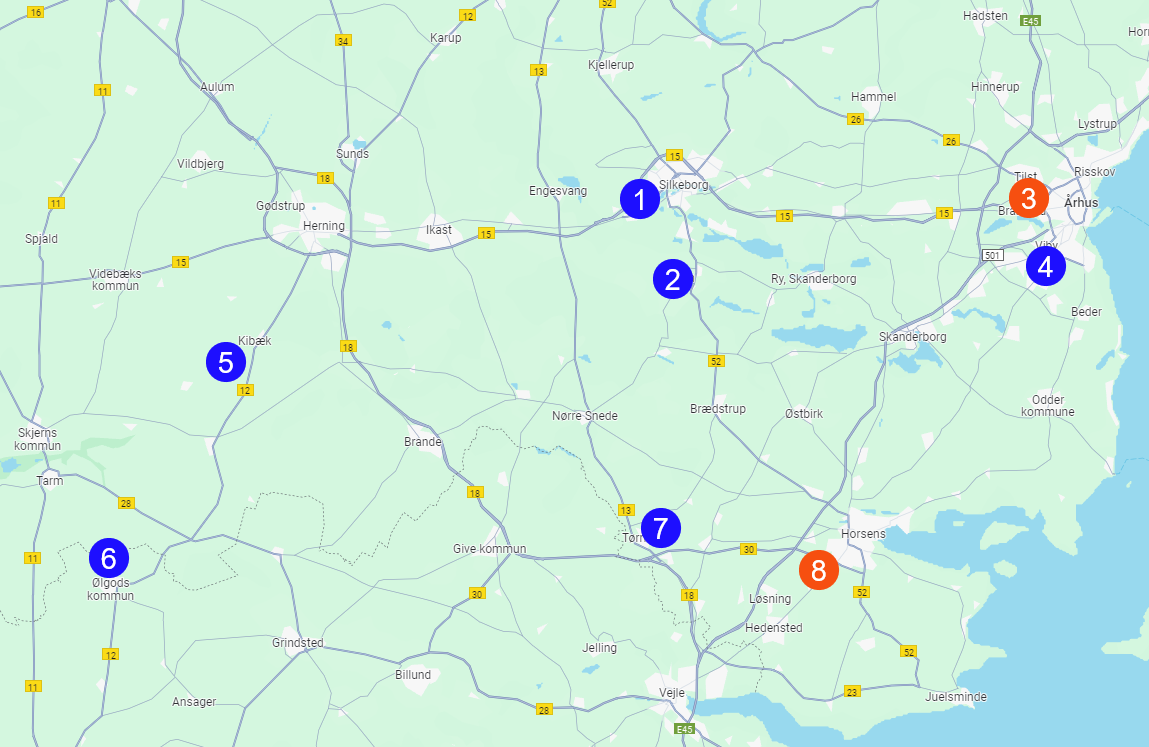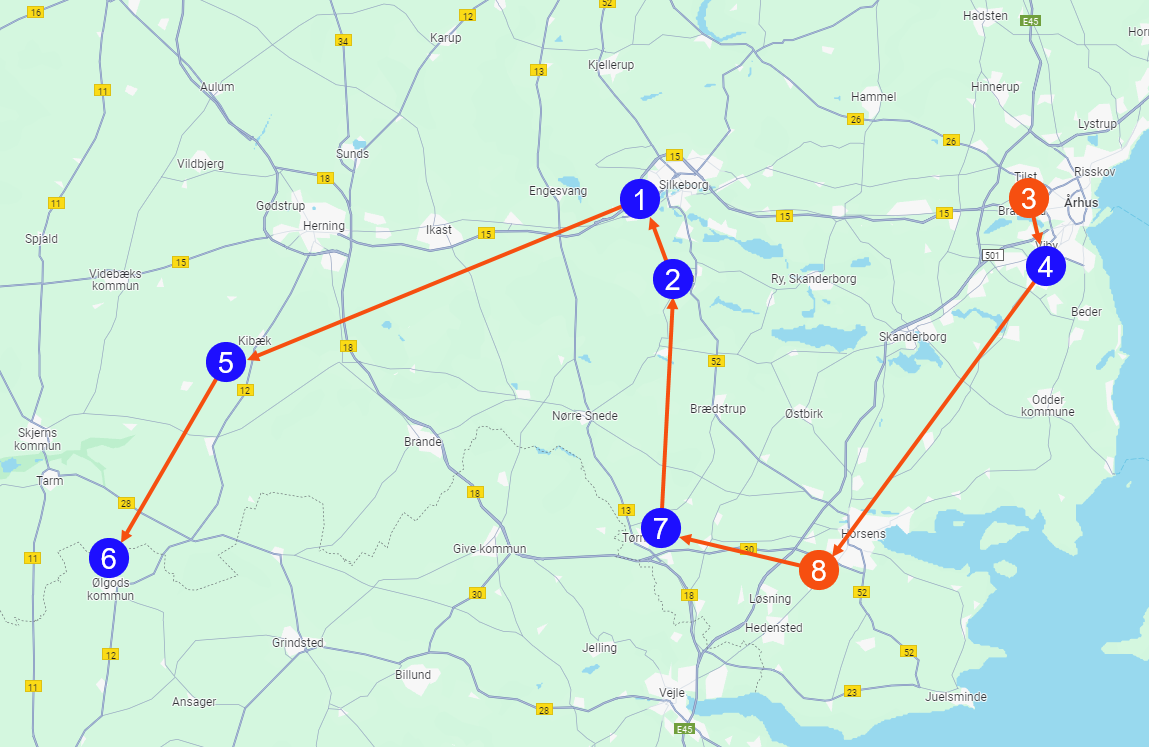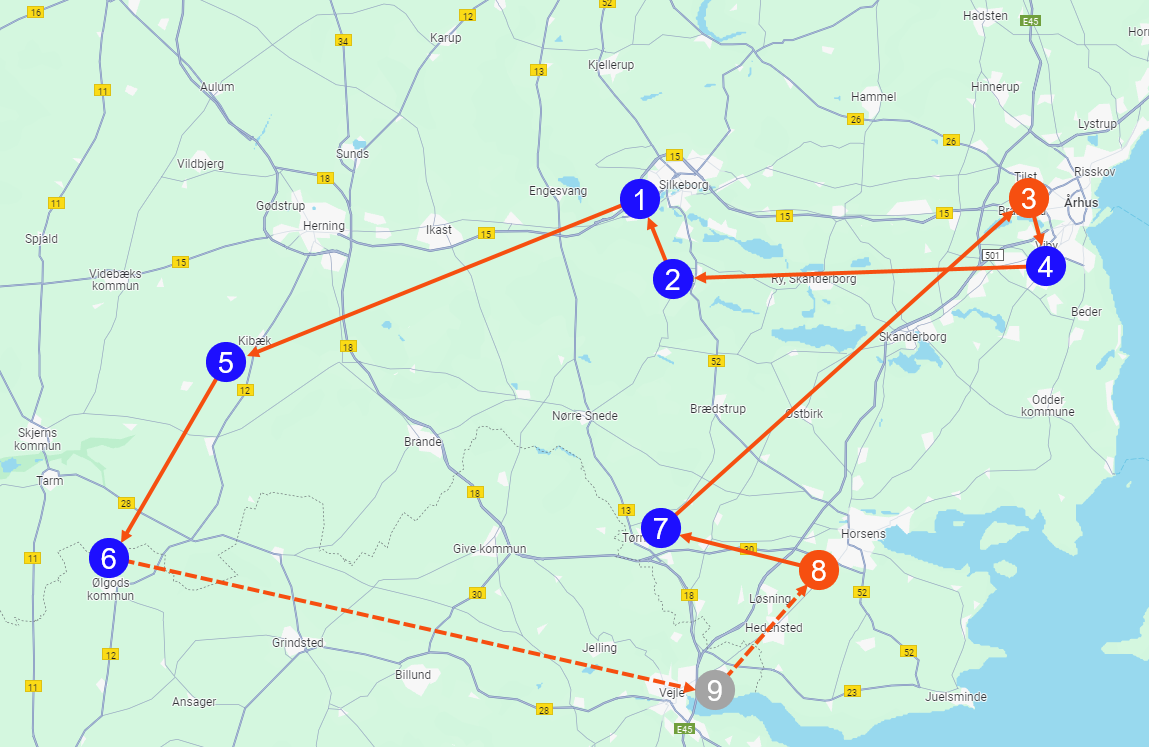Last updated: 13.09.2024
Route sequence for consignment orders
In this Price item
It is not possible to route optimise consignment shipments in the normal route optimisation. However, it is possible to create an optimal route sequence of stops in a consignment order in order reception. It is also possible to manually organise the stops by selecting a row and clicking on Order up/Move down.
Find the consignment order and open it in order reception
It is possible to search for the consignment order in order reception, consignment check, order check or shipment check.
Calculate the route sequence
All the stops on the consignment order are listed under Addresses (located by default on the Shipments tab). Click on Calculate route sequence to put the addresses in an optimal sequence.

If you click on the down arrow on the button, the following settings can be made:
-
Vehicles must start route at: The current location of the vehicle, or where the vehicle should start its route, can be entered here. Any of the existing addresses in the list can be selected, but this does not mean that this address will be the first stop when calculating the route sequence; it just means that the calculation will take it into account when determining the first stop. Only pickup addresses can be the first stop in the list.
If you select [None], the current position of the vehicle is not taken into account, only the addresses in the list are used to optimise the route. If the vehicle is far from the first stop, the route may not be optimal.
By clicking
 , it is possible to enter a different starting address from those on the shipments, such as the vehicle's overnight parking place, the driver's home address, or any other address where the driver has to start the working session, such as the office.
, it is possible to enter a different starting address from those on the shipments, such as the vehicle's overnight parking place, the driver's home address, or any other address where the driver has to start the working session, such as the office.
-
Vehicles must end route at: Here it is possible to enter an address where the vehicle should end the working session. Any of the existing addresses in the list can be chosen but this does not mean that this address will be the last stop; it just means that the vehicle should go there once all the deliveries have been unloaded, and the calculation will take this into account when determining the last stop. Only delivery addresses can be the last stop in the list.
If [None] is selected, no final position is used, and only the addresses in the list are used to optimise the route. If the vehicle should be moved further after the last stop, the route may not be optimal as the calculation does not take this into account.
By clicking
 , it is possible to enter a different final address from those on the shipments, such as the vehicle's overnight parking place, the driver's home address, or any other address where the driver has to or wants to end the route, such as the office.
, it is possible to enter a different final address from those on the shipments, such as the vehicle's overnight parking place, the driver's home address, or any other address where the driver has to or wants to end the route, such as the office.
It is not possible to see in the address list in order reception which addresses are pickup addresses and which are delivery addresses, as is the case in the regular route optimisation. You need to look at the individual shipments to see which addresses are pickup and delivery addresses.
Example
Courier Services has a consignment with the following stops. Some shipments should be picked up at 3 and delivered at 4, 5 and 6, and some shipments should be collected at 8 and delivered at 1, 2 and 7.

After optimising the route sequence, without specifying a start or end point, the route is 3-4-8-7-2-1-5-6. The calculation only takes into account making the distance travelled as efficient as possible.

If we instead say that the calculation should take into account that the working session starts and ends at the driver's home address in Vejle (9), the route sequence becomes 8-7-3-4-2-1-5-6. The address is not added as the first and last stop in the address list, but the route sequence is changed to best include the desired start and end address.
